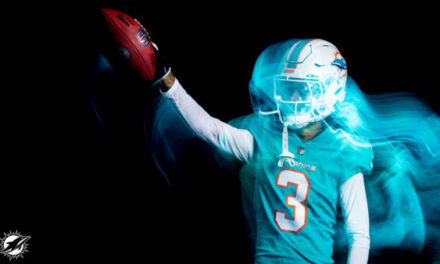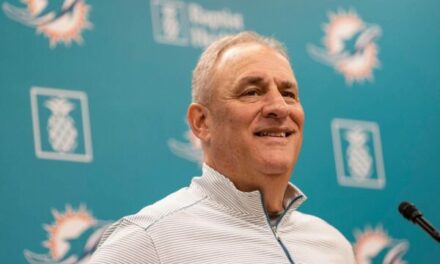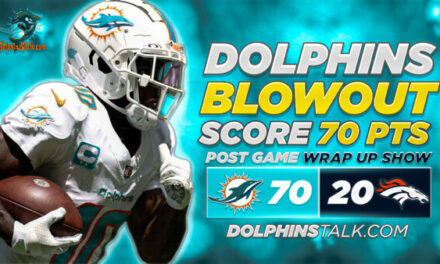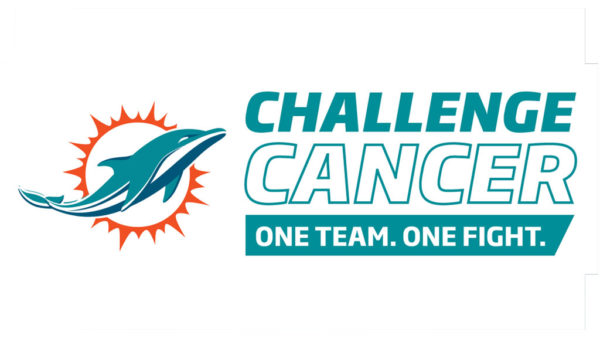The Miami Dolphins season came to a bitter, cold end on Saturday night. A total letdown from the Dolphins’ vaunted offense dashed a season filled with promise. Miami mustered just seven points in Kansas City on Saturday night.
The Dolphins, who had 10 wins and a three-game lead in the AFC East, have now been without a playoff win for more than 23 years. Miami will have the longest drought in the sport if the Detroit Lions win their game (they haven’t played as of this writing).
This season’s collapse was monumental, and there’s plenty of blame to go around, especially on the offensive side of the ball. As always, this column will center around Tua Tagovailoa’s performance.
I have written this column almost every week for four years. Considering the stakes, this is one of the worst performances of Tagovailoa’s career.
Let’s look at some of the game’s key throws and end the conversation we’ve been having at the end of these articles all season.
Tua All-22 vs. Chiefs
This read is fine. Anyone telling you otherwise is wrong. Pocket management is more the culprit imo. pic.twitter.com/g3DPe9cjeP
— Dante Collinelli (@DanteCollinelli) January 14, 2024
Let’s start with the INT. This was quite early in the game, but it was clear Tagovailoa was off his game after this throw.
Pre-snap, the Chiefs initially show a two-high safety look before moving to a single-high safety with a robber in the middle of the field. It’s a look the Dolphins get a lot because they love to throw in-breaking routes. Post-snap, they move again, and this time they return to two-high.
That’s a lot of information to process. What’s so frustrating about this play is it was one of the few times Tagovailoa made a confident read on Saturday. This is the correct throw against this coverage.
Waddle is breaking directly into the space created by the vacated safety. However, Tagovailoa’s throw is just brutally bad. He sails it over Waddle’s head, leading to the INT.
Tagovailoa has struggled with pressure all season, and the interior push from KC’s defensive line clearly affects this throw. It forces Tagovailoa onto his backfoot, which causes him to overcompensate on the throw.
The more prudent takeaway from this play isn’t about the inaccurate throw. It’s the lack of pocket movement. Tagovailoa needed to slide and climb in the pocket on this play. He has room to his left, and the rest of the pocket is blocked up well.
If he slides, he finds a few extra seconds and room to set his feet and drive this ball to Waddle for a first down. If you watched the Texans’ game on Saturday, you saw rookie C.J. Stroud do stuff like that all game. It’s something elite quarterbacks must do in the modern NFL.
Tagovailoa — a fourth-year QB — panicked at this moment and threw a bad ball.
Dolphins get exactly what they want, and the throw kills the play. pic.twitter.com/zjbgS705k2
— Dante Collinelli (@DanteCollinelli) January 14, 2024
For all the debate centered around Tagovailoa these last few years, there were some things you could always count on. The top of that list included his quick-game accuracy. It’s not the most glamorous trait, but there’s plenty to work with.
On Saturday, Tagovailoa’s quick-game accuracy was just brutal. There were plenty of misses to choose from, but this poor throw to De’Von Achane stood out.
This is the throw before the INT covered above — yet another sign Tagovailoa was off from the start. Watch the placement on this throw. It’s in the dirt, giving Achane almost no chance to make a play.
The cold and wind took its toll. It made Tagovailoa’s job harder all night. However, a truly elite QB can’t start missing easy passes like this because of the weather.
This play is blocked perfectly. The Dolphins get a blocking TE on an LB in space with nothing but green grass in front of one of the league’s fastest players. This is a play the QB has to make, whether it’s sunny or -7.
This one is bad though. Either step up and hit Achane, who is NFL open, or slide to your left and hit Smythe.
Can’t be a statue down multiple scores. This is the time to press. pic.twitter.com/Hz3TwCPegT
— Dante Collinelli (@DanteCollinelli) January 14, 2024
Late in the game, Tagovailoa made a few head-scratching checkdown throws. The Dolphins were down multiple scores and needed points. This throw is just inexcusable, given the game situation.
The Dolphins motion Hill across the formation, but he’s not really in the concept. They’re trying to hit one of the three vertical routes downfield, likely Achane’s, out of the backfield.
The Chiefs have a two-high look and cover this play reasonably well. However, Achane has leverage (and space) on LB Nick Bolton. It’s a tight throw, but that’s NFL open.
This is another case where Tagovailoa needed to manipulate the pocket. Chris Jones (DE at screen’s bottom) wins initially, but Robert Hunt does a nice job coming over to help. Charles Omenihu does a nice job winning from the other side, too.
However, Omenihu has an inside track. If Tagovailoa just steps to his left, Terron Armstead pushes Omenihu to the right. At this point, Achane’s window might be closed.
Still, Durham Smythe is right there for a dump-off and easy completion. Against Baltimore and Buffalo, Tagovailoa got in trouble because he forced the issue when he didn’t have to. Last night, he needed to force the issue, get creative, do something to pull Miami out of its lull, but he didn’t really try.
This is the hot route situation I mentioned last night. Tua looks left, and there’s no hot route.
Idk if his guys didn’t hear the check or there wasn’t one in the concept (both are problems), but he needs to come off that quicker and get to Wilson in the MoF. pic.twitter.com/Php5H1ATeR
— Dante Collinelli (@DanteCollinelli) January 14, 2024
Okay, last one. This play has a little more gray area, but it’s an important part of Miami’s offensive collapse. They lack answers to pressure. Tagovailoa doesn’t have them, and it doesn’t seem like the offense has them consistently.
The Chiefs show pressure before the snap. They are likely bringing more defenders than Miami can account for. This means Tagovailoa is hot. He needs to find his hot route and get the ball out. Nothing groundbreaking.
When the play starts, he’s looking at the bottom of the screen, and there’s no hot route there. Achane and Jaylen Waddle aren’t turning around in time for Miami to beat the blitz.
Now, there’s a chance they ran the wrong route or missed the check at the line. However, when Tagovailoa sees they’re not running hot, he has to come off that. Cedrick Wilson is running a sit route right in the middle of the field and is wide open.
Tagovailoa’s lack of adaptability showed up constantly on Saturday night. The Dolphins must find better answers for pressure this offseason because teams will send it a lot next season.
It seems like it’ll have to come from scheme and playcalling because the QB isn’t doing it.
Conclusion
The theme of this year’s series was answering whether Tagovailoa was an “elite quarterback.” I stopped short of calling him elite all season because it has to be genuinely earned.
For a quarterback to be elite, there should be no debate. You should watch them play, and the feeling you get should be unmistakable. Tagovailoa had endless opportunities to take the next step this season, and he just didn’t do it.
In fact, he looked worse each time he got a chance. Following Miami’s loss to the Eagles, it felt like Tagovailoa was close. Eventually, he beat Dallas, but that game was missing the takeover moment needed to feel confident in Tagovailoa.
Then followed a three-game collapse against the Ravens, Bills, and Chiefs. So, no, Tagovailoa is not an elite quarterback. He just doesn’t have the natural tools to handle speed bumps during a game.
His lack of mobility, creativity, and arm talent limit what he can do on the field. When things don’t go according to plan — which happens constantly against good teams — Tagovailoa doesn’t have the juice to make something happen on his own.
While all of that is true, keeping a level head is essential. None of the above means Tagovailoa is a bad quarterback. In fact, it makes him precisely the quarterback I’ve said he is for the better part of three years.
He’s just regular “good.”
The only change in my opinion on Tagovailoa is I’m no longer optimistic he will take the next step. He improved this season, and he deserves credit for that. But the season’s last three games showed a quarterback held back by things outside his control.
It’s why mobility and arm strength/talent are coveted in the NFL Draft. Meaningfully improving those things at the NFL level is almost impossible.
The big question for Miami this offseason is whether “good” is good enough. They’ll have to decide on Tagovailoa’s contract soon, and their Super Bowl window is already starting to close.
Tyreek Hill, Terron Armstead, Jalen Ramsey, and Xavien Howard will be another year older. Jaylen Waddle, Christian Wilkins, Jaelan Phillips, and Jevon Holland will need or already need extensions sooner rather than later.
Answering that question requires a separate article. However, it’s the question that will define Miami’s offseason and several of their seasons to come.















You don’t have an elite QB you don’t have a chance it’s that simple so if the Dolphins brass don’t have any intentions on winning playoff games and being contenders then by all mean sign him. I’m sure Grier will because if he doesn’t that will admit he drafted a bust but considering Ross is as blind as a bat he shouldn’t worry considering he should’ve been fired years ago.
I actually think the Dolphins regressed this season I truly believe they were a better team in 2022. Tua lead the league in quarterback rating and had he played in more games and not gotten the concussion in the Packer game they win that game and game against the Jets etc. I think had he remained healthy they win another 3 games or more with a tougher schedule than in 2023. Not only that but they beat Buffalo in 2022 and damn near beat them in Buffalo twice and one time with Thompson at QB. All this leads me to believe they were the better team in 2022 and regressed in 2023 if you actually look at it.